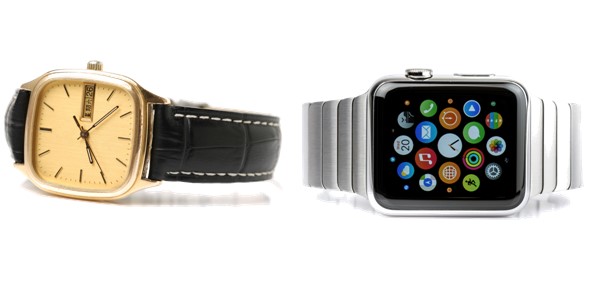 How did we get here? From hand-crafted cogs to system on chip (SoC). From spinning the crown to get a day’s worth of time-telling to switching between your calorie calculator and your playlist. As dramatic a change as it might sound, there has been transition on the way. If, like me, you were a kid with the calculator watch in the 80s, you’d probably get a lot of heads to turn at school. Ironically, even today you can get people to turn their heads to watch a calculator on your wrist, only to be followed by a cackle. To that effect, the important point is that we have been wearing a computing device on our wrists in the past as well, so what took us so long to get here?
How did we get here? From hand-crafted cogs to system on chip (SoC). From spinning the crown to get a day’s worth of time-telling to switching between your calorie calculator and your playlist. As dramatic a change as it might sound, there has been transition on the way. If, like me, you were a kid with the calculator watch in the 80s, you’d probably get a lot of heads to turn at school. Ironically, even today you can get people to turn their heads to watch a calculator on your wrist, only to be followed by a cackle. To that effect, the important point is that we have been wearing a computing device on our wrists in the past as well, so what took us so long to get here?
Even though technology is a huge contributor, the bigger game changer is the consumer behavior. The smartphone wave is paving the way for smart wearables today. But are consumers ready to swap those cogs for the SoC? According to estimates by IDC, the wearable device shipments are anticipated to reach 237.1 million by the year 2020. Makes sense for companies like Fitbit to amass valuations around the $3 billion mark. But the question of hype versus reality still remains to be answered. In order for the wearable technology market to thrive, it needs to come up with features that genuinely address customer needs.
Consumer behavior has evolved significantly over the decades, and the rate of change seems to be much higher in recent times. The cyclical nature of technology driving consumer habits or vice versa, is a bit of a dilemma for the wearable industry. Gemalto conducted a survey on end consumers to see how they feel about connected and wearable devices. Unsurprisingly, our results resonate with studies done by other research firms. Price seems to be factor, and always will be for any consumer device that is targeted for mass adoption. But beyond price, consumer experience seems to be a key deal maker or deal breaker. Users want a seamless consumer experience that can deliver a connected-out-of-the-box experience.
In one of our earlier posts, we highlighted how the MNOs need to evolve their thinking to address the connectivity market. Consumer OEMs, whether makers of smart watches, fitness trackers or personal drones; need to understand the subtle requirements of consumers. Wearable technology is augmenting the mobile revolution in many ways, but does not necessarily imply complete dependence on the smartphone for using the nice features on wearable devices. We’ve compiled an infographic that lists the different barriers and challenges, and highlights some of the qualitative feedback we gathered from consumers that can be useful for OEMs that are looking to develop their own wearable technology.
Download the infographic, visit our IoT Connectivity web page for consumer electronics to see how Gemalto can help you achieve a better consumer experience, or book a meeting slot with us to meet at MWC Shanghai.


